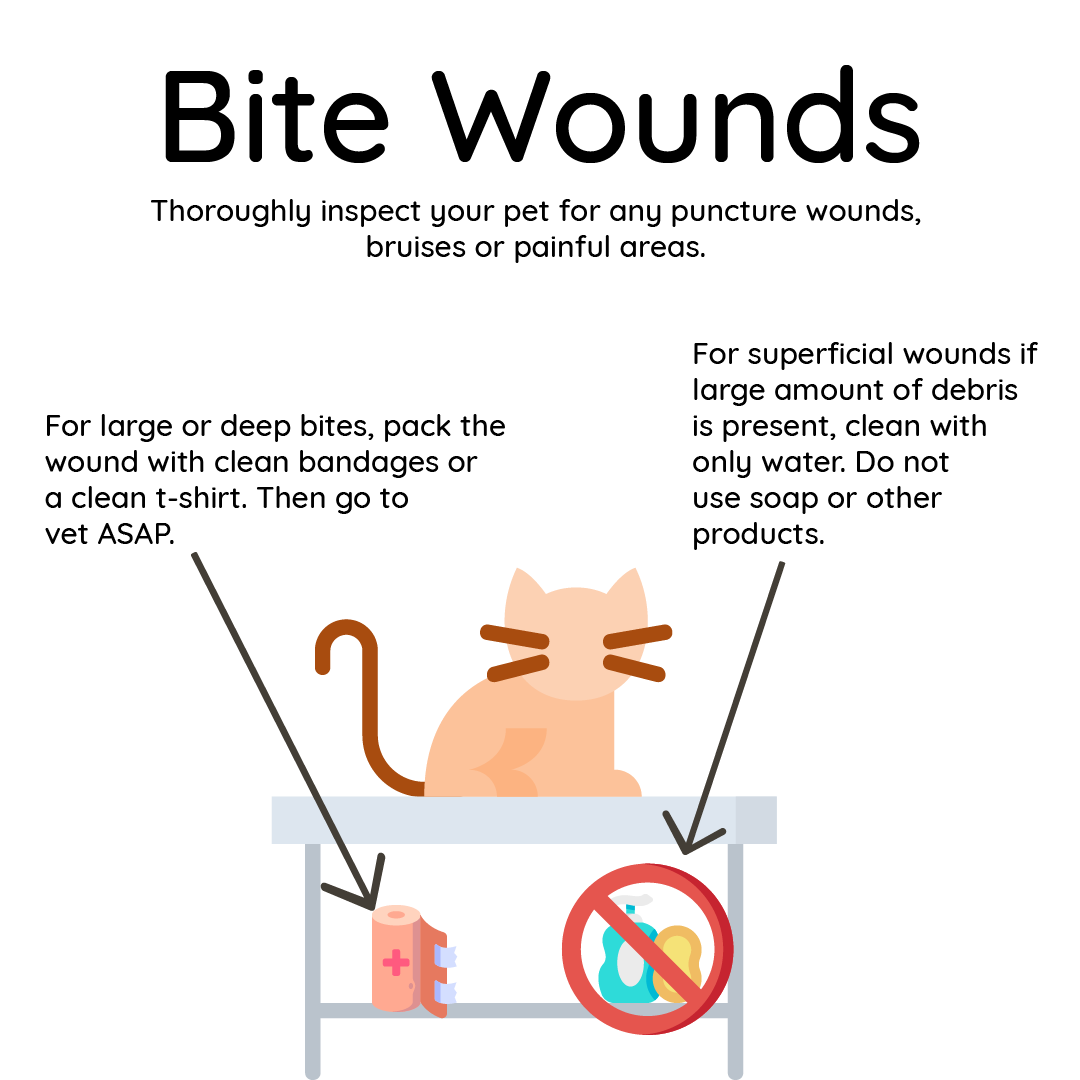Bite Wounds
Treat all suspected bite wounds seriously. If your pet may have been bitten, it's important to thoroughly search for any signs of bites. Bite wounds may indicate additional internal injuries or develop infections if left untreated.
Recommendation
Thoroughly inspect your pet for any puncture wounds, bruises or painful areas. Small puncture wounds are easily missed, especially on furry pets.

Warning
For large or deep bites, especially those involving internal structures, pack the wound with clean, dry bandaging material, such as gauze or a clean t-shirt. Bring your pet to a vet ASAP.
Tips
- Keep the area open and dry. If debris is present, you may clean wounds with only water. Do not use soap or other products. Do not wrap or bandage the wound.
- Consult with your vet. Even small wounds can have undetected complications.